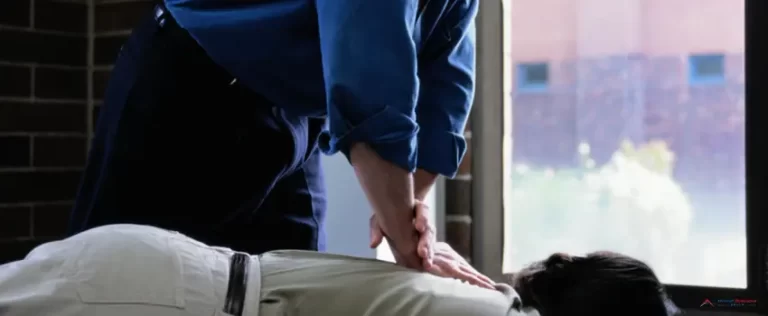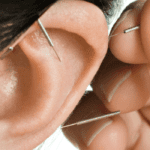Any pain that keeps you from moving is one of the worst things anyone can experience.
Foot pain is one of these types of pain, and if you’re experiencing it, you might want to have it checked out. You might have plantar fasciitis, a condition where a band of tissues in your foot is inflamed, causing your pain.
Physical therapy is one of the ways they are treated. Today, studies have shown that using kinesiology tape together with physical therapy produces excellent results in pain relief. Learn more about KT tape for plantar fasciitis and how to tape for plantar fasciitis with Advanced Chiropractors Group.
What is Plantar Fasciitis?
But first, what is plantar fasciitis? It’s one of the most common causes of foot pain. It involves the plantar fascia, a band of tissues found in the foot that supports the arch and absorbs all the shock our foot experiences when we walk or run.
Putting constant stress on the plantar fascia results in small tears that cause irritation and inflammation.
Symptoms and Risk Factors
Patients often feel a sharp pain near the heel. It’s worse during the morning after waking up, then gradually gets better when you start going about your day. However, it is also triggered by standing too long or getting up from sitting.
Experts are still unclear why plantar fasciitis happens, but certain conditions increase the odds of it happening. Some of these conditions include:
- Certain activities: Activities like ballet, long-distance running, and aerobic dancing put a lot of stress on the feet.
- Obesity: The extra weight increases the stress the plantar fascia experiences.
- Work: Jobs that require people to stand and walk eventually stress the feet constantly.
- Age: People aged between 40 and 60 are more susceptible to plantar fasciitis.
- Foot characteristics: High arches, flat feet, and unusual gaits affect weight distribution while standing, adding stress on the plantar fascia.
Some of the most common ways plantar fasciitis is treated include medications and physical therapy. Another way to manage plantar fasciitis is through kinesiology taping.
What is Kinesiology Tape?
Kinesiology tape, or Kinesio Tape, is an elastic strip healthcare professionals use to ease the pain. It slightly pulls back to gently lift your skin, creating gaps between your skin and the tissue beneath it. They are applied directly onto the affected muscles; they are not meant to wrap around the limbs like standard athletic tape.
What Does Kinesiology Tape Do?
Kinesio Tape is used to:
Enhance Performance
Kinesiology tape benefits some athletes by improving their performance and preventing injuries during competitions. Many runners use it whenever they run a marathon to wake up the glutes and remind them to continue their work.
Support Weak Areas
Kinesiology tape benefits patients with patellofemoral stress disorder, Achilles tendonitis, and IT band friction syndrome by providing extra support for muscles and joints.
Another reason athletes prefer kinesiology tape is because it allows them to move normally. Studies show that kinesiology tape improves the performance of fatigued muscles.
Treat Injuries
Physical therapists and chiropractors sometimes use kinesiology taping as part of a comprehensive treatment plan for injured patients. According to the American Physical Therapy Association, using kinesiology taping with manual therapy makes treatments more effective.
Re-Educate Muscles
Kinesiology tape works great at retraining muscles that have been injured or lost their function. According to therapists, the unusual sensation of tape on the skin helps make patients more aware of how they’re standing or moving, making them exert more effort into correcting their form.
Manage Scars
Kinesio Tape isn’t used on open wounds, but some evidence suggests that it helps improve scarring after an injury or surgery over time.
Some Guidelines for Kinesiology Tape
Kinesiology tape mimics the skin’s elasticity, allowing you to move freely. It has medical-grade adhesives that withstand water and stay put for three to five days.
If you plan to use kinesiology tape, here are some general guidelines on their use:
- Do not leave them on for longer than 24 hours since they will lose some elasticity. Replace them each day to ensure maximum stimulation; leaving them on for longer than recommended may cause mild skin irritations.
- Make sure your feet are clean before applying kinesiology tape, and don’t stretch the tape too much.
- Your therapist or chiropractor may recommend hypoallergenic undertape if you have sensitive skin, which can be applied before the kinesiology tape to provide additional protection.
Kinesiology Tape for Plantar Fasciitis
Here are some of the things kinesiology tape for plantar fasciitis can and can’t do:
Promote Better Circulation
Some studies show that Kinesio tape for plantar fasciitis helps improve circulation in affected areas; however, results are inconsistent and need more research.
Kinesiology taping cannot improve blood circulation by itself, but pairing it with regular stretching improves treatment significantly. Flexing your feet ten times before standing up and stretching the Achilles tendon and calf muscles also help promote circulation to the feet.
Provides Targeted Support
Unlike athletic tape, Kinesio tape for plantar fasciitis is highly stretchable, like a rubber band. Its elasticity allows therapists and chiropractors to place it on joints to support inflamed tissue, muscles, and tendons.
Pain Relief
KT tape for plantar fasciitis helps reduce stress and keep the plantar fascia in place. It also helps provide temporary pain relief and protect the tissue from further injury. It also gives your plantar fascia more time to heal by reducing the swelling.
How to Apply Kinesiology Tape for Plantar Fasciitis
Here are the steps for applying tape for plantar fasciitis:
- Measure the distance between the back of your heel to the ball of your foot.
- Cut four long strips of tape and round all of their edges.
- Measure the length of the ball of your foot.
- Cut the tape and round its edges.
- Stick the four long strips of tape over your foot’s arch to the back of your heels.
- Stick the larger strip of tape over the balls of your feet. Rub it several times to secure it.
How Effective Is Kinesiology Tape for Plantar Fasciitis?
Kinesiology taping is a relatively new method of treating injuries and pain in sports medicine and physical therapy. Fortunately, preliminary studies show it does effectively help provide patients pain relief from plantar fasciitis.
A 2015 review found that taping provides short-term pain relief for people with plantar fasciitis. However, they did not find any long-term effects of KT tape for plantar fasciitis.
In another 2015 study, researchers compared taping to 15 minutes of physiotherapy, which involved transcutaneous electric nerve stimulation, and five minutes of low-level infrared therapy. They found that combining kinesiology taping with physiotherapy results in lower pain levels than those who only did physiotherapy.
Talk to your physical therapist or chiropractor to understand the benefits and expected outcomes of kinesiology taping.
Find Foot Pain Relief at Advanced Chiropractors Group
Our affiliate Chiropractors in Clearwater, FL, provide the best treatments for foot pain, including KT tape for plantar fasciitis. They also provide custom foot orthotics. Call us








